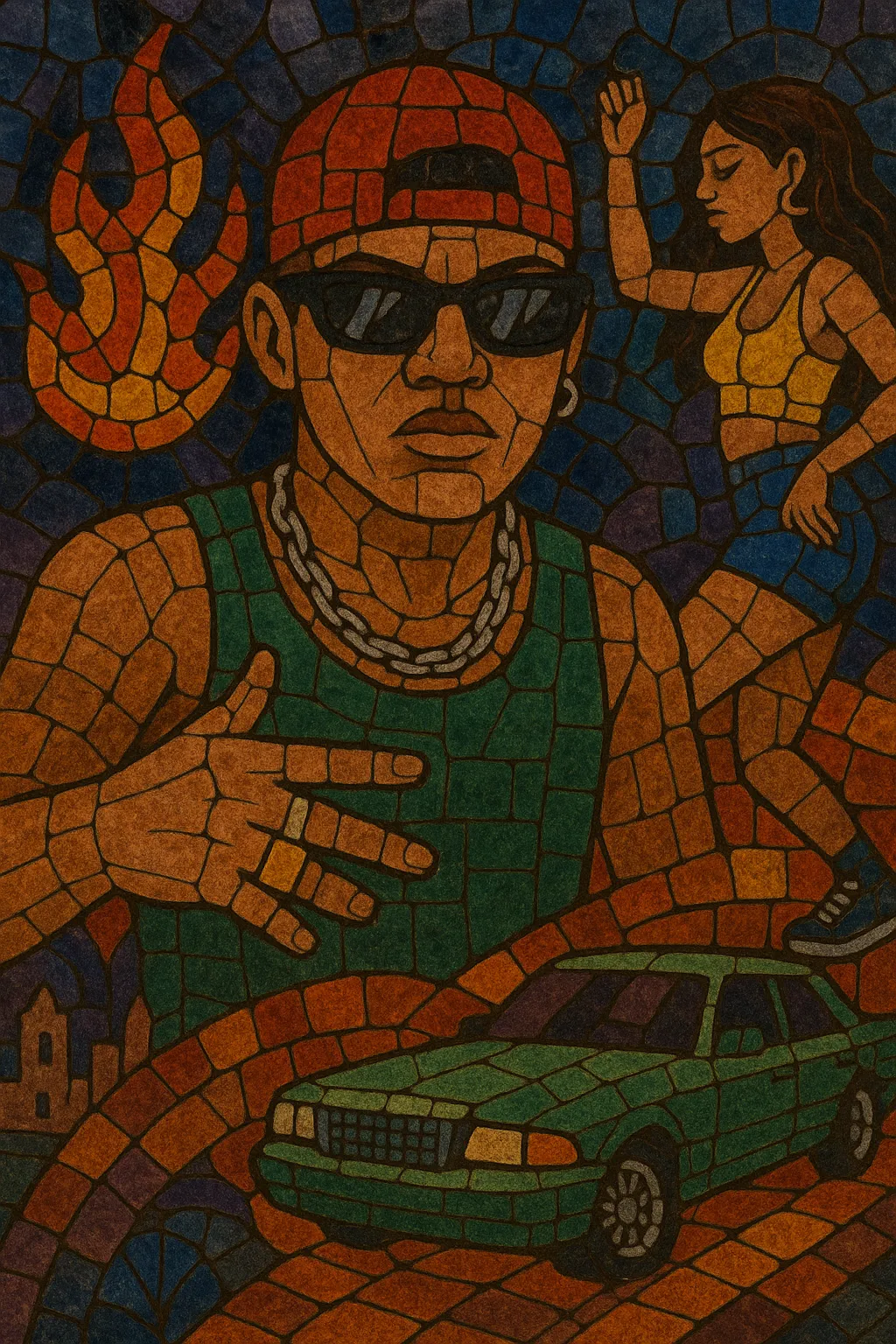Reggaeton mexa is the Mexican take on reggaetón, fusing the classic dembow pulse with local slang, humor, and references to Mexican youth culture. It leans on viral, dance‑oriented hooks and streetwise storytelling, often delivered with bold, tongue‑in‑cheek bravado.
Beyond straight perreo, producers and artists frequently blend elements from regional mexicano and cumbia with modern urbano textures (808s, crisp claps, autotune‑forward vocals). The result is a distinctly Mexican club sound that thrives on social media, parties, and neighborhood scenes in Mexico City, Monterrey, and Guadalajara.
Puerto Rican and Colombian reggaetón entered Mexican airwaves and clubs in the 2000s, establishing the dembow rhythm and perreo culture among Mexican audiences. While most hits were imported, local DJs and MCs started experimenting at parties and in mixtapes.
In the 2010s, a new wave of Mexican artists embraced reggaetón not just as a sound but as a vehicle for Mexican slang, humor, and urban narratives. DIY parties and perreo‑centric club nights in CDMX, Monterrey, and Guadalajara helped cement a scene. Online platforms (YouTube, SoundCloud) and later TikTok accelerated discovery, letting Mexico’s urbano acts break nationally without traditional radio.
The genre found a strong voice in the 2020s through viral singles, meme‑savvy branding, and irreverent lyrics. Producers folded in flavors from cumbia and regional mexicano while retaining the dembow engine and trap‑era sound design (808 subs, autotune). The style’s visibility grew alongside broader Mexican urbano movements, influencing club culture and spawning adjacent fusions (including belico‑tinged dembow experiments).
By the mid‑2020s, reggaeton mexa had a recognizable profile: dancefloor‑ready, hook‑driven tracks with a distinctly Mexican attitude—equally at home on streaming charts, neighborhood parties, and festival stages.


